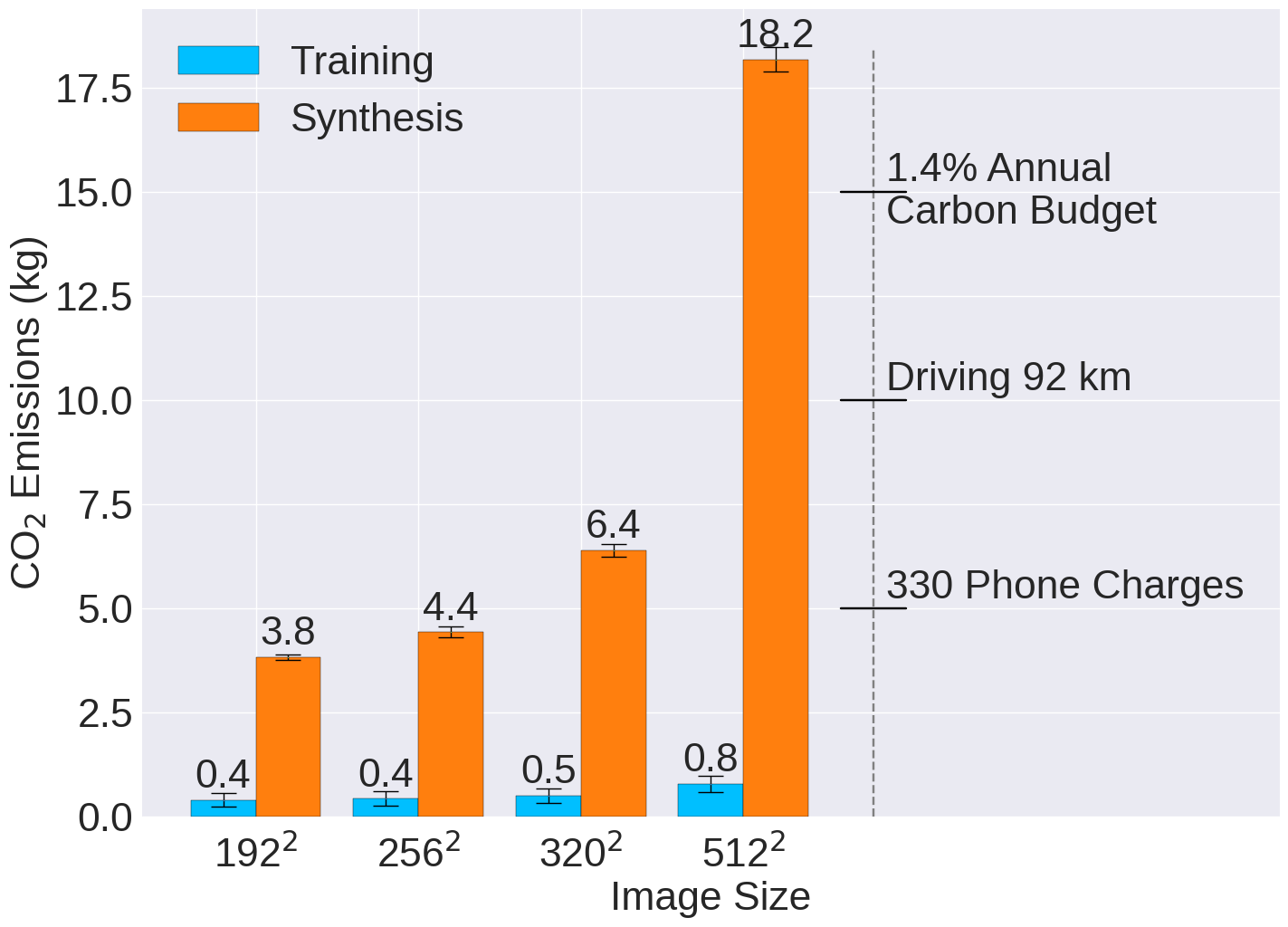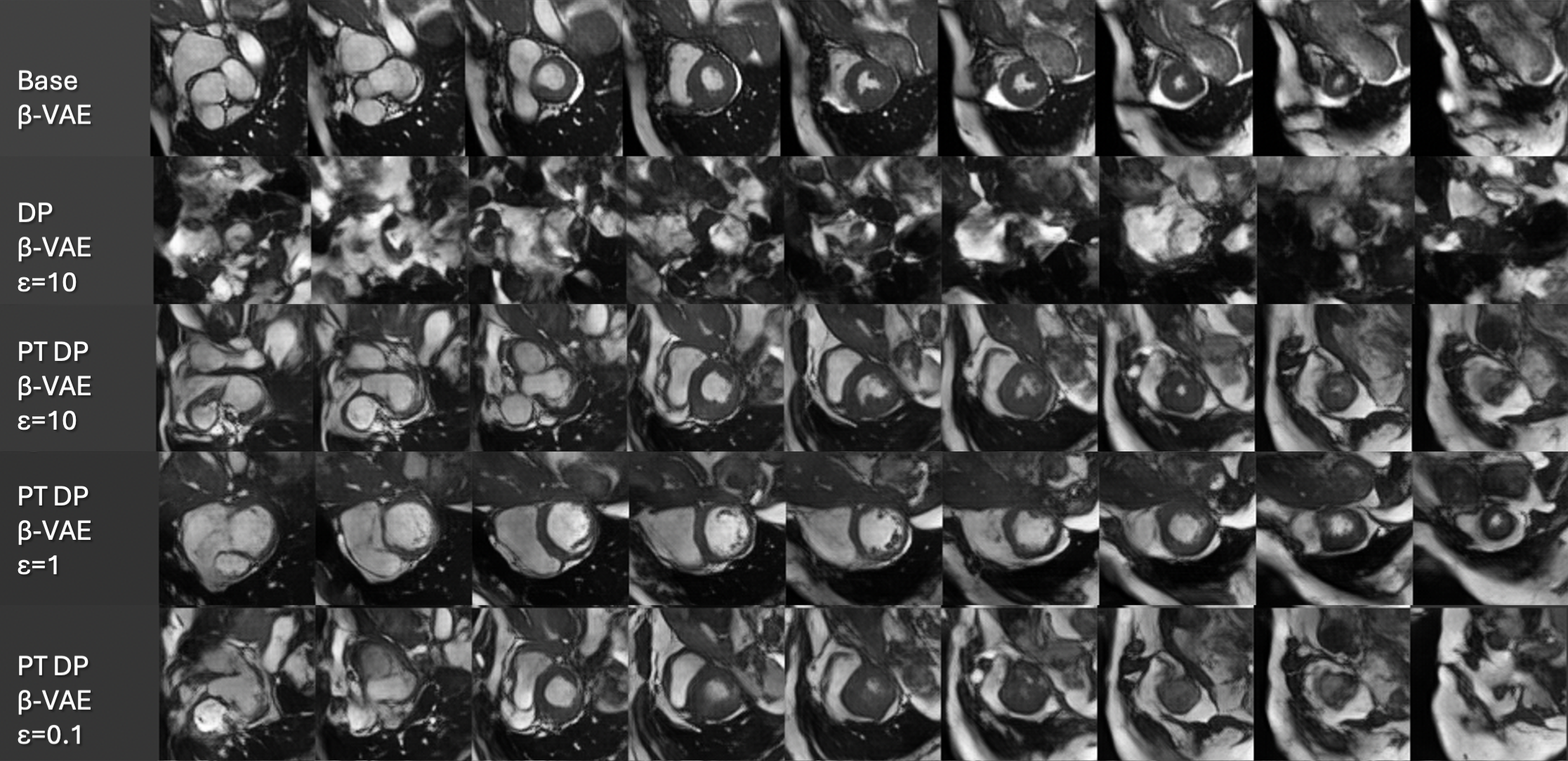Latent Pollution Model: The Hidden Carbon Footprint in 3D Image Synthesis

0

Sign in to get full access
Overview
- Examines the hidden carbon footprint of 3D image synthesis using deep generative models
- Proposes a "Latent Pollution Model" to quantify the energy and emissions associated with training and inference
- Finds that the carbon footprint can be significant, especially for large-scale deployments
Plain English Explanation
The paper investigates the environmental impact of using deep learning models to generate 3D images. While these models have become powerful tools for creating realistic, synthetic visuals, the researchers point out that the computational resources required to train and run them can have a substantial carbon footprint.
To understand this hidden cost, the researchers developed a "Latent Pollution Model" - a way to estimate the energy usage and greenhouse gas emissions associated with the 3D image synthesis process. They found that even for relatively small-scale use cases, the carbon footprint can be significant, and it grows rapidly as the models and datasets become larger and more complex.
The key insight is that the energy required to train these generative models and then generate new images during inference is not trivial. It's an important consideration as these AI-powered 3D imaging techniques become more widely adopted, especially in resource-intensive applications like virtual worlds, simulations, and digital entertainment.
Technical Explanation
The paper introduces the "Latent Pollution Model" (LPM) as a framework for quantifying the environmental impact of 3D image synthesis using deep generative models. The LPM aims to estimate the energy consumption and resulting carbon emissions associated with both the training and inference phases of these AI systems.
For the training phase, the model accounts for factors like the compute hardware, training data requirements, and model architecture complexity. The inference phase considers the energy needed to generate new 3D images from the trained model.
The researchers applied the LPM to several common 3D generative modeling approaches, including variational autoencoders (VAEs) and diffusion models. They found that even small-scale 3D image synthesis tasks can have a non-trivial carbon footprint, which grows significantly as the model and dataset size increases.
The paper also discusses how these environmental costs should be considered alongside the potential benefits and applications of 3D generative AI, such as in medical imaging or procedural content generation. The authors argue that quantifying the hidden carbon costs is an important step towards developing more sustainable AI systems for 3D image synthesis.
Critical Analysis
The Latent Pollution Model presented in this paper provides a valuable framework for assessing the environmental impact of 3D image synthesis using deep generative models. By accounting for the energy and emissions associated with both training and inference, the researchers shine a light on an important, but often overlooked, aspect of these AI systems.
One potential limitation of the study is the reliance on estimated or approximate values for some of the model parameters, such as the average power consumption of various hardware components. As the authors acknowledge, real-world measurements may be necessary to further validate and refine the LPM.
Additionally, the paper focuses on the carbon footprint of 3D image synthesis, but does not consider other potential environmental impacts, such as the sourcing of raw materials for the compute infrastructure or the e-waste generated at the end of the hardware's lifespan. A more holistic life cycle analysis could further strengthen the environmental assessment.
Despite these minor caveats, the Latent Pollution Model represents an important step towards understanding and mitigating the sustainability challenges posed by the increasing use of resource-intensive AI applications. As the researchers suggest, this work can help inform the development of more energy-efficient generative models and drive broader conversations about the environmental responsibility of the AI community.
Conclusion
The "Latent Pollution Model" proposed in this paper sheds light on the hidden carbon footprint of 3D image synthesis using deep generative AI. By quantifying the energy and emissions associated with both model training and inference, the researchers demonstrate that the environmental impact of these technologies can be significant, especially as the scale and complexity of the systems increase.
As 3D generative modeling continues to advance and find new applications, this work highlights the importance of considering the sustainability implications alongside the technical capabilities. The Latent Pollution Model provides a valuable framework for evaluating the environmental costs of AI-powered 3D image synthesis, which can help inform the development of more energy-efficient and environmentally responsible systems in the future.
This summary was produced with help from an AI and may contain inaccuracies - check out the links to read the original source documents!
Related Papers


0
Latent Pollution Model: The Hidden Carbon Footprint in 3D Image Synthesis
Marvin Seyfarth, Salman Ul Hassan Dar, Sandy Engelhardt
Contemporary developments in generative AI are rapidly transforming the field of medical AI. These developments have been predominantly driven by the availability of large datasets and high computing power, which have facilitated a significant increase in model capacity. Despite their considerable potential, these models demand substantially high power, leading to high carbon dioxide (CO2) emissions. Given the harm such models are causing to the environment, there has been little focus on the carbon footprints of such models. This study analyzes carbon emissions from 2D and 3D latent diffusion models (LDMs) during training and data generation phases, revealing a surprising finding: the synthesis of large images contributes most significantly to these emissions. We assess different scenarios including model sizes, image dimensions, distributed training, and data generation steps. Our findings reveal substantial carbon emissions from these models, with training 2D and 3D models comparable to driving a car for 10 km and 90 km, respectively. The process of data generation is even more significant, with CO2 emissions equivalent to driving 160 km for 2D models and driving for up to 3345 km for 3D synthesis. Additionally, we found that the location of the experiment can increase carbon emissions by up to 94 times, and even the time of year can influence emissions by up to 50%. These figures are alarming, considering they represent only a single training and data generation phase for each model. Our results emphasize the urgent need for developing environmentally sustainable strategies in generative AI.
Read more7/23/2024
📊

0
Automated Real-World Sustainability Data Generation from Images of Buildings
Peter J Bentley, Soo Ling Lim, Rajat Mathur, Sid Narang
When data on building features is unavailable, the task of determining how to improve that building in terms of carbon emissions becomes infeasible. We show that from only a set of images, a Large Language Model with appropriate prompt engineering and domain knowledge can successfully estimate a range of building features relevant for sustainability calculations. We compare our novel image-to-data method with a ground truth comprising real building data for 47 apartments and achieve accuracy better than a human performing the same task. We also demonstrate that the method can generate tailored recommendations to the owner on how best to improve their properties and discuss methods to scale the approach.
Read more8/29/2024
💬

0
WildFusion: Learning 3D-Aware Latent Diffusion Models in View Space
Katja Schwarz, Seung Wook Kim, Jun Gao, Sanja Fidler, Andreas Geiger, Karsten Kreis
Modern learning-based approaches to 3D-aware image synthesis achieve high photorealism and 3D-consistent viewpoint changes for the generated images. Existing approaches represent instances in a shared canonical space. However, for in-the-wild datasets a shared canonical system can be difficult to define or might not even exist. In this work, we instead model instances in view space, alleviating the need for posed images and learned camera distributions. We find that in this setting, existing GAN-based methods are prone to generating flat geometry and struggle with distribution coverage. We hence propose WildFusion, a new approach to 3D-aware image synthesis based on latent diffusion models (LDMs). We first train an autoencoder that infers a compressed latent representation, which additionally captures the images' underlying 3D structure and enables not only reconstruction but also novel view synthesis. To learn a faithful 3D representation, we leverage cues from monocular depth prediction. Then, we train a diffusion model in the 3D-aware latent space, thereby enabling synthesis of high-quality 3D-consistent image samples, outperforming recent state-of-the-art GAN-based methods. Importantly, our 3D-aware LDM is trained without any direct supervision from multiview images or 3D geometry and does not require posed images or learned pose or camera distributions. It directly learns a 3D representation without relying on canonical camera coordinates. This opens up promising research avenues for scalable 3D-aware image synthesis and 3D content creation from in-the-wild image data. See https://katjaschwarz.github.io/wildfusion for videos of our 3D results.
Read more4/15/2024


0
On Differentially Private 3D Medical Image Synthesis with Controllable Latent Diffusion Models
Deniz Daum, Richard Osuala, Anneliese Riess, Georgios Kaissis, Julia A. Schnabel, Maxime Di Folco
Generally, the small size of public medical imaging datasets coupled with stringent privacy concerns, hampers the advancement of data-hungry deep learning models in medical imaging. This study addresses these challenges for 3D cardiac MRI images in the short-axis view. We propose Latent Diffusion Models that generate synthetic images conditioned on medical attributes, while ensuring patient privacy through differentially private model training. To our knowledge, this is the first work to apply and quantify differential privacy in 3D medical image generation. We pre-train our models on public data and finetune them with differential privacy on the UK Biobank dataset. Our experiments reveal that pre-training significantly improves model performance, achieving a Fr'echet Inception Distance (FID) of 26.77 at $epsilon=10$, compared to 92.52 for models without pre-training. Additionally, we explore the trade-off between privacy constraints and image quality, investigating how tighter privacy budgets affect output controllability and may lead to degraded performance. Our results demonstrate that proper consideration during training with differential privacy can substantially improve the quality of synthetic cardiac MRI images, but there are still notable challenges in achieving consistent medical realism.
Read more7/24/2024